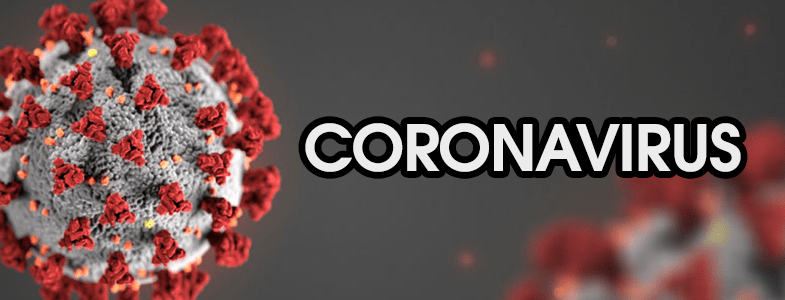We have all been told to wash our hands, avoid touching our face, and to stay at home if we have symptoms of fever, cough or shortness of breath to prevent transmission of Covid-19.
But there is more you need to know.
First, the disease is known as Severe Acute Respiratory Syndrome Coronavirus 2 (SARS-CoV-2,) because it is genetically related to something the world has already seen, the coronavirus responsible for the SARS outbreak of 2003. SARS-CoV-2 and Covid-19 are the same disease.
The 114-day epidemic of the severe acute respiratory syndrome (SARS) swept 29 countries, affected a reported 8,098 people, left nearly 10% dead, and almost paralyzed the Asian economy. SARS was successfully contained using aggressive quarantine measures and other public health interventions. And that experience informs our decision-making today.
SARS-CoV-2 is now beyond “containment.”
In reality, we are at war with Covid-19, a microscopic virus, originating from a bat, that we do not entirely yet understand. Coronaviruses are not new. They were originally named after their distinct crown-like appearance under the electron microscope. In humans, they cause upper-respiratory-tract infections and are responsible for a large proportion of common colds.
Thankfully, SARS-2 appears to be less fatal than SARS, but unfortunately, it is far more contagious, which accounts for the WHO pandemic status declaration on March 11. It is really important to know that not a single child died during the SARS outbreak that killed 774 people in 2003. Not one. In China, not one young child died from SARS-2 either. Unfortunately, at the other end of the age continuum, the fatality rate for those over 80 is 22 percent.
Why?
There are a great number of viruses that cause mild disease in children and severe disease or even death in adults. Some examples include chicken pox, mononucleosis, and my least favorite—because I contracted it at 28, while practicing in Kitsap County—adenovirus. When a disease kills a specific age group, it is most often due to “host” factors, meaning older bodies are over or under-reacting to the infection compared with younger bodies. (This is a bit of an oversimplification, but a practical way to look at the difference between infection in children and adults.)
In the case of SARS, older lungs and the older immune system overreact to the infection, inadvertently damaging the little sacs (called alveoli) in the lungs responsible for delivering oxygen to the bloodstream. SARS directly damages lung tissue, causing a condition known as Acute Respiratory Distress Syndrome (ARDS.) By most reports, ARDS is killing elderly patients infected with SARS-CoV-2, instead of bacterial pneumonia, rendering antibiotics useless in the fight against this disease.
Can anything be done to save lives?
To be honest, our lives will not be saved by the government. And lives will not be saved by elected officials or large institutions. Lives will not be saved by a miracle vaccine this year either. Lives will be saved by everyday decisions made by responsible citizens in Washington State and the rest of the nation.
In the Art of War, Sun Tzu said, “Every battle is won or lost before it is ever fought.” And this is the moment where one united community will make the difference for the hundreds of thousands of residents living inside of it.
The overall death rate for SARS-CoV-2 is estimated at 2-3%, similar to that of the Flu Pandemic of 1918; SARS-CoV-2 is 10-30 times more deadly than influenza.
We are definitely at war.
The 3 P’s of battle are preparation, positioning and planning. Knowing when to engage and when to withdraw will be vital. Which brings me to my point. It is time to withdraw where we can. Closing schools and banning gatherings of more than 250 people in counties where Covid-19 infections are widespread is the responsible thing to do.
These decisions are not being made out of fear of the disease, they are meant to slow the spread of this disease as much as possible. While no children and few in the middle age category will die, our elderly population is at significant risk. Most of us will get infected at one point or another. Prepare. But if we are all infected at one time, it will overwhelm the capacity of our healthcare system resulting in a greater loss of life.
Even a good plan fails when poorly executed. This will be a teachable moment for us all, especially our children. Each of us must take responsibility to temporarily interrupt our lives, for the good of the most vulnerable among us. Healthcare workers are vulnerable too and need access to protective equipment in order to keep our community safe. If you have masks or other supplies, please share them with those on the front lines seeing patients who are ill with Covid-19. Please do not steal them from hospitals or other healthcare facilities.
In closing, I will quote Sun Tzu again, “If you know the enemy and know yourself, you need not fear the result of a hundred battles. If you know yourself but not the enemy, for every victory gained you will also suffer a defeat. If you know neither the enemy nor yourself, you will succumb in every battle.”
We know ourselves, though we do not know everything about our enemy. We will undoubtedly experience victory and suffer defeat in the coming months. Please take necessary measures so we can save as many lives as possible.
